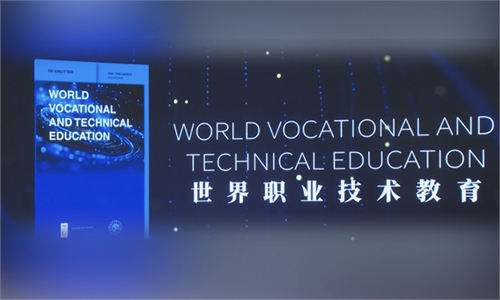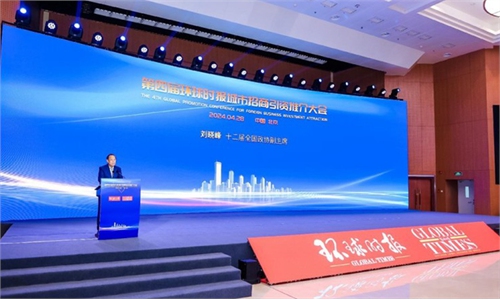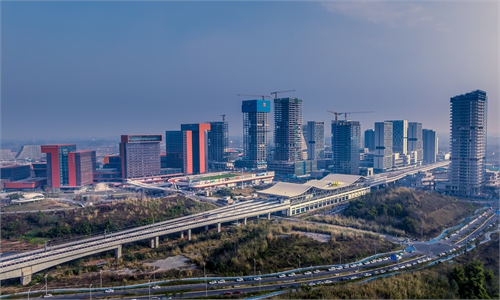SOURCE / PRESS RELEASE
2025 Urban Innovation Development and International Cooperation Conference held in Shenzhen
On January 7, the 2025 Urban Innovation Development and International Cooperation Conference, hosted by the Small and Medium-Sized Cities Development Committee of the China Research Society of Urban Development (CRSUD), was convened in Shenzhen. Attendees engaged in lively discussions and exchanges on topics such as innovation urban development, international business environment creation, and development of new quality productive forces.
Innovation was one of the central themes of the conference. Wang Zhenchuan, honorary vice chairman of CRSUD and honorary chairman of the Small and Medium-Sized Cities Development Committee, stated in a speech that only through continuous innovation can cities foster new growth drivers and enhance their competitiveness and influence.
Li Zibin, president of the China Association of Small and Medium Enterprises (CASME) and former deputy director-general of the National Development and Reform Commission (NDRC), underscored four essential paths to building desirable cities: deepening institutional reforms and improving the market economy, continuously expanding high-level openness, driving progress through scientific and technological innovation, and coordinating the development of material and spiritual civilization.
City representatives at the conference shared the status of their development with each other, agreeing that implementation of the grand vision of Chinese-style modernization requires balancing various relationships: the relationship between effective markets and capable governments, between total supply and demand, between cultivating new drivers and renewing old ones, between optimizing increments and revitalizing stock, and enhancing quality while increasing scale.
Wu Tingbao, member of the Standing Committee of the Shenyang Municipal Party Committee and Shenyang vice mayor, stated that Shenyang leads the nation in industries such as the automotive, aviation, and robotics industry. The city is also home to major facilities like BMW's largest global production base and new-generation fighter jet production centers.
Leng Xuefeng, vice mayor of Dalian, highlighted the city's comprehensive industrial foundation. Except for tobacco, all major industry categories are represented in Dalian. Recent breakthroughs in manufacturing transformation and upgrading have made the city a dual pilot region for digital transformation and innovative technical renovation in manufacturing, with strategic emerging industries contributing 14 percent of GDP in 2024.
A favorable business environment acts like a magnetic field - capital, enterprises, and talent naturally gravitate toward it. Bai Xiaoyun, member of the Standing Committee and head of the Publicity Department of Fuyang city, emphasized the city's ongoing efforts to develop an efficient and streamlined government service platform and create a business environment where enterprises feel encouraged to innovate, take action, and invest boldly.
During the conference, distinguished guests including Zhuang Congsheng, former vice chairman of the All-China Federation of Industry and Commerce and former president of the China Institute of Private Sector, Zhao Huapu, vice president of CRSUD and executive president of the National Small and Medium Cities Development Committee, and Xiao Jincheng, president of the China Society of Territorial Economists and former director general of the Institute of Spatial Planning and Regional Economy of the National Development and Reform Commission, shared their insights. They emphasized that in recent years, regions across the country have been committed to fostering a conducive environment, creating a "gravitational pull" and amplifying a "magnetic field" to attract high-quality enterprises. This has elevated urban soft power from gradual enhancement to transformational leaps, fully harnessing the advantages of an "agglomeration effect" to the greatest extent.
The ultimate goal is to establish modern urban frameworks, drive transformation and upgrades in economic, ecological, and cultural fields, promote efficient resource allocation and coordinated development, enhance cities' overall competitiveness and sustainable development capacity, and provide multiple actionable approaches and solutions to accelerate the process of Chinese-style modernization.
City representatives at the conference shared their development strategies and unanimously agreed that China's economy is at a critical stage of high-quality development. The more challenging the tasks of overcoming obstacles and tackling difficulties, the greater the need to respect development laws, adopt scientific methods, and enhance proactivity.
Innovation was one of the central themes of the conference. Wang Zhenchuan, honorary vice chairman of CRSUD and honorary chairman of the Small and Medium-Sized Cities Development Committee, stated in a speech that only through continuous innovation can cities foster new growth drivers and enhance their competitiveness and influence.
Li Zibin, president of the China Association of Small and Medium Enterprises (CASME) and former deputy director-general of the National Development and Reform Commission (NDRC), underscored four essential paths to building desirable cities: deepening institutional reforms and improving the market economy, continuously expanding high-level openness, driving progress through scientific and technological innovation, and coordinating the development of material and spiritual civilization.
City representatives at the conference shared the status of their development with each other, agreeing that implementation of the grand vision of Chinese-style modernization requires balancing various relationships: the relationship between effective markets and capable governments, between total supply and demand, between cultivating new drivers and renewing old ones, between optimizing increments and revitalizing stock, and enhancing quality while increasing scale.
Wu Tingbao, member of the Standing Committee of the Shenyang Municipal Party Committee and Shenyang vice mayor, stated that Shenyang leads the nation in industries such as the automotive, aviation, and robotics industry. The city is also home to major facilities like BMW's largest global production base and new-generation fighter jet production centers.
Leng Xuefeng, vice mayor of Dalian, highlighted the city's comprehensive industrial foundation. Except for tobacco, all major industry categories are represented in Dalian. Recent breakthroughs in manufacturing transformation and upgrading have made the city a dual pilot region for digital transformation and innovative technical renovation in manufacturing, with strategic emerging industries contributing 14 percent of GDP in 2024.
A favorable business environment acts like a magnetic field - capital, enterprises, and talent naturally gravitate toward it. Bai Xiaoyun, member of the Standing Committee and head of the Publicity Department of Fuyang city, emphasized the city's ongoing efforts to develop an efficient and streamlined government service platform and create a business environment where enterprises feel encouraged to innovate, take action, and invest boldly.
During the conference, distinguished guests including Zhuang Congsheng, former vice chairman of the All-China Federation of Industry and Commerce and former president of the China Institute of Private Sector, Zhao Huapu, vice president of CRSUD and executive president of the National Small and Medium Cities Development Committee, and Xiao Jincheng, president of the China Society of Territorial Economists and former director general of the Institute of Spatial Planning and Regional Economy of the National Development and Reform Commission, shared their insights. They emphasized that in recent years, regions across the country have been committed to fostering a conducive environment, creating a "gravitational pull" and amplifying a "magnetic field" to attract high-quality enterprises. This has elevated urban soft power from gradual enhancement to transformational leaps, fully harnessing the advantages of an "agglomeration effect" to the greatest extent.
The ultimate goal is to establish modern urban frameworks, drive transformation and upgrades in economic, ecological, and cultural fields, promote efficient resource allocation and coordinated development, enhance cities' overall competitiveness and sustainable development capacity, and provide multiple actionable approaches and solutions to accelerate the process of Chinese-style modernization.
City representatives at the conference shared their development strategies and unanimously agreed that China's economy is at a critical stage of high-quality development. The more challenging the tasks of overcoming obstacles and tackling difficulties, the greater the need to respect development laws, adopt scientific methods, and enhance proactivity.



